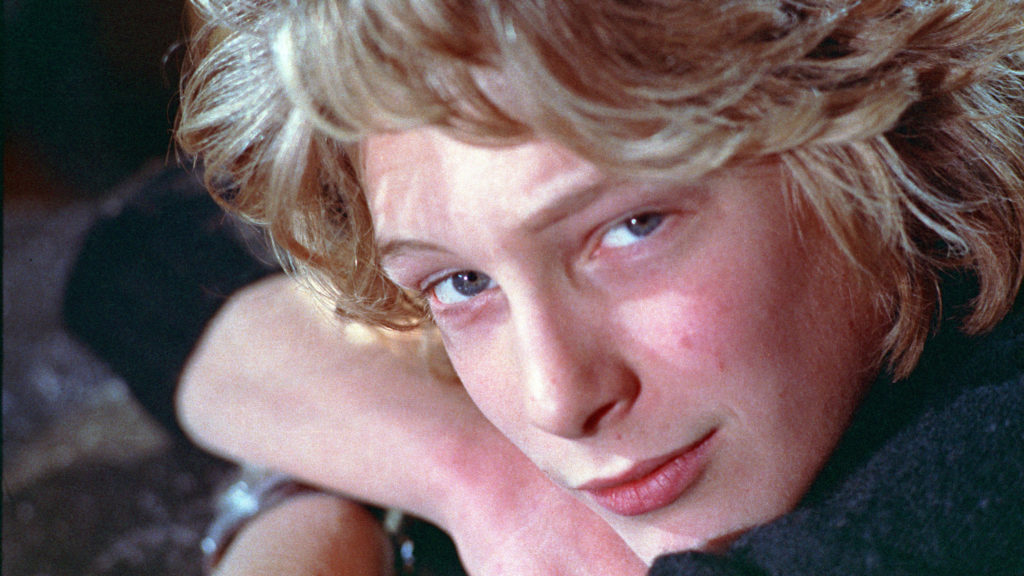Kristina Lindström is a filmmaker, journalist, and author. She has directed highly acclaimed documentaries including “Astrid Lindgren;” “Palme” with Maud Nycander, awarded two Guldbagge Awards; and “Silence” with Kristian Petri. Among Lindström’s work as an author, her trilogy about Swedish history from a young girl’s perspective has become a long-lived national success. She also served as Head of Cultural and Factual Programming at public service broadcaster, Sveriges Television (SVT). Lindström has been awarded the Linné Prize, Kristallen, Stockholm’s Culture Prize, and the Ikaros Award, among other honors.
“The Most Beautiful Boy in the World” is screening at the 2021 Sundance Film Festival, which is taking place online and in person via Satellite Screens January 28-February 3. The film is co-directed by Kristian Petri.
W&H: Describe the film for us in your own words.
KL: “The Most Beautiful Boy in the World” is a story about desire and sacrifice, and of family secrets affecting generations. The starting point is an obsession with beauty. What happens to a young person, a child, who is pulled into a world where adult desire and lust set the rules?
Björn Andrésen was only 15 years old when the famous director Luchino Visconti chose him to play Tadzio in the film “Death in Venice.” Visconti described it as “Pure love, between an aging man and a young boy.” Visconti also declared Björn to be the world’s most beautiful boy. Björn’s face turned into an icon. A projection of fantasies and dreams for men, women, and girls. A gay icon. A manga figure.
W&H: What drew you to this story?
KL: This is a sensational life story with many layers. It unfolds, one door opens, then another and another. Björn’s story contains life experiences that are difficult to grasp, but at the same time, are universally touching.
W&H: What do you want people to think about after they watch the film?
KL: I want them to see the child — to be gentle with it, and to respect it. It is also a story where a heavy family legacy is broken, and where there is reconciliation. This is a film where Björn gets to tell his own story, a way for him to reclaim his own life story.
W&H: What was the biggest challenge in making the film?
KL: To create trust and security with Björn and the people in his world. Also, to find the people and places that were important to Björn from his childhood and onwards that would travel with him through his life.
The goal was to portray this huge, complex material in a cinematic film.
W&H: How did you get your film funded? Share some insights into how you got the film made.
KL: We turned to an independent film producer, Stina Gardell with Mantaray Film, who we felt could manage this gripping story with us. She has been loyal to us and the film.
We received support through the Swedish Film Institute, SVT, and various funds in Scandinavia and Europe.
W&H: What inspired you to become a filmmaker?
KL: Reading. Reading out loud. That is where everything started: curiosity to understand the world, and who we human beings are on planet earth. Politics, history. A wish to take part in this narrative.
W&H: What’s the best and worst advice you’ve received?
KL: The best advice was to listen: to the human being, to the rhythm in the story.
The worst advice: “Do not think that you are special.”
W&H: What advice do you have for other women directors?
KL: Stand your ground. Do not give up. Never give up. Speak up when you are disrespected — because you will be.
W&H: Name your favorite woman-directed film and why.
KL: I have so many, including the films of Claire Denis, Jane Campion, and Sofia Coppola.
W&H: How are you adjusting to life during the COVID-19 pandemic? Are you keeping creative, and if so, how?
KL: COVID-19 makes it harder to be hands-on. Things are sometimes a bit more difficult: I like to talk to people and come up with ideas in conversations. Many of these moments of serendipity are lost. I read much more now and watch more films, which is good. Still, photography has always and continues to be a big inspiration for me, as well as music.
W&H: The film industry has a long history of underrepresenting people of color onscreen and behind the scenes and reinforcing — and creating — negative stereotypes. What actions do you think need to be taken to make Hollywood and/or the doc world more inclusive?
KL: You need to constantly be aware of it and actually, concretely count that different ethnicities and genders are represented.







